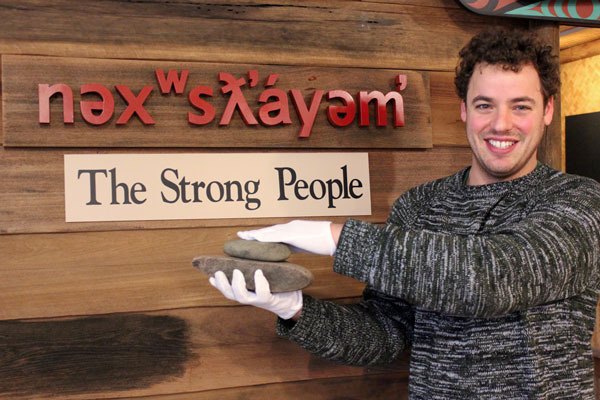Some of the area’s most historically significant archaeological discoveries will be unveiled this weekend at the Museum & Arts Center in the Sequim-Dungeness Valley (MAC) in a new history exhibit highlighting past excavations at Washington Harbor and the U.S. Highway 101 Sequim bypass.
The “Unearthing Tribal History” exhibit, housed within the Jamestown S’Klallam Longhouse Exhibit, opens with a free public reception at 1 p.m. Saturday, March 22, at the MAC Exhibit Center, 175 W. Cedar St., Sequim.
The opening begins with a traditional blessing ceremony by Jamestown S’Klallam spiritual leader Pat Adams, followed by a reception sponsored by 7 Cedars Casino.
The featured artifacts, which include numerous stone tools, were uncovered during archaeological digs in the late 1990s at the
Sequim bypass site along U.S. Highway 101 and in 1981 from Suxtcikwi’In, a main S’Klallam village located along Washington Harbor at the present-day site of the Battelle Marine Sciences Laboratory. All of the artifacts are on loan from the Jamestown S’Klallam Tribe.
“People have lived here for several thousand years and Sequim has a pre-contact history,” archaeologist and Jamestown S’Klallam Tribe cultural resources specialist Gideon Cauffman said.
“The Manis Mastodon was a real game-changer. We are now home to the oldest evidence of human occupation in the lower 48 states, but we also have these other sites that are between then and the historic period.”
The exhibit, a collaborative endeavor between the Jamestown S’Klallam Tribe and the MAC, was developed by Cauffman, Jamestown S’Klallam tribal elder and MAC volunteer Rosie Zwanziger and MAC history exhibits coordinator Lyn Fiveash.
“The S’Klallam territory encompassed much of the Olympic Peninsula, from Clallam Bay to the mouth of the Hood Canal,” Zwanziger noted. “The Sequim bypass site was just one of 12 or so seasonally occupied sites, additional to the 16 or so permanent villages on the waterfront.”
Cauffman said in addition to one being a coastal site and the other more inland, the two excavated locales highlighted in the exhibit also represent different periods of occupation with the Sequim bypass site being about 2,800 years ago and Washington Harbor some 650 years ago.
“These sites are not just the tribe’s history but everyone’s history,” said Cauffman, noting 18,000 artifacts were excavated during the Sequim bypass excavations. “My goal overall is to bring the importance of cultural resources management to the general public.”
In addition to its historical importance, the Sequim bypass site in particular holds personal and professional significance for Cauffman. As a 16-year-old Sequim High School student in 1996, the Jamestown S’Klallam tribal citizen was hired to work at the dig site with an excavation team from Eastern Washington University.
Cauffman said the experience, which entailed working as a field technician after school alongside archaeologists and college students, is the reason he pursued a career in archaeology. He said he now hopes to inspire tribal youth to enter the profession in much the same way.
“I always try to get younger people involved, whether it’s an internship or other program,” Cauffman said. “I think that once someone realizes how fun the work is and how it can be rewarding, then maybe another tribal person will become interested in cultural resources management.”
The MAC Exhibit Center is open 10 a.m.-3 p.m. Tuesday-Saturday. Call 683-8110 or visit www.macsequim.org for details.


